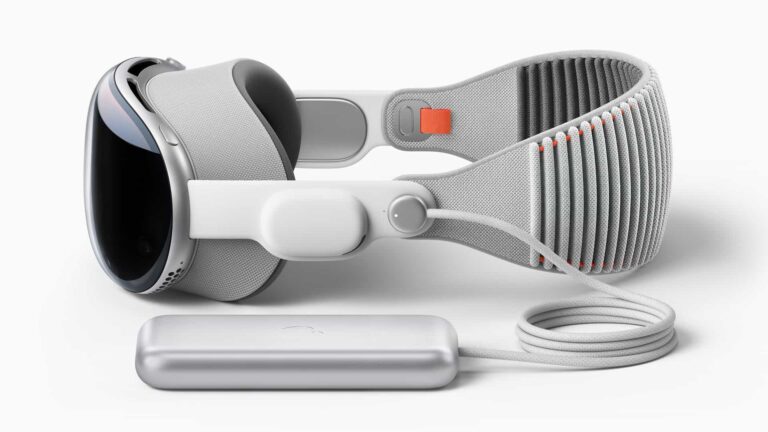
Apple introduced its new Vision Pro XR headset at the company’s annual Worldwide Developer Conference (WWDC) in Cupertino Monday, after 10 years of development, instantly making the new “spatial computing” headset the hottest topic in tech. The $3,499 Apple Vision Pro does VR and AR. Users can dial how much of each they want. Links to hands-on reviews are at the bottom of this story.
The list of features is impressive. The gesture control is exquisitely thought out. I was surprised and delighted by this as well as the effect Apple calls Eyesight, which allows the user’s eyes to be seen by people outside of the headset. The 6K display is something only seen on high-end military-industrial design headsets. It’s better than human-eye vision. When you first try it, you better be sitting down, because it can make you fall over. This, too, is something we’ve not seen in a consumer device before.
The 3D camera capture and playback are compelling. The new Snap Specs, which have no street date, also do this, and it works great. The connection to the Apple ecosystem, and the collaboration features, all seem very promising. It emulates an IMAX screen in the living room, which sounds like a great thing, unless you consider it can’t be shared. Your companions will need their own headsets.
https://youtu.be/TX9qSaGXFyg
If you include sales tax (in LA that’s 9.5%), AppleCare (about $500), and custom Zeiss lenses for vision correction ($500 to $1,000), the Apple Vision Pro could cost over $5,000. In fairness, people buy similarly priced high-end personal computers from Apple all the time. But Apple computers are known quantities.
The role of Siri in operating the device is unclear and concerning. If the Siri I know runs this device, it is dead in the starting blocks. Apple didn’t say much about AI, which an XR device needs to be contextually aware of where you are and what you’re doing. Can the Vision Pro’s sensors scan and map your location, creating a digital twin or mesh? Can the device remember it?
A two-hour tethered external battery may have been a necessary compromise, but it’s a problem. Maybe a big one. First, the cord always gets in the way. Second, a two-hour battery life for a mobile media consumption device—Apple illustrated using it on a plane—is inadequate. Actually, it’s dumb. Guess we’ll have to pick our movies based on length? Or buy a second battery? Can you buy a second battery?
FaceTime chat is not avatar chat, and it did not look 3D in the presentation. I can’t believe they blew this one. Microsoft’s janky Holoportation experiments from 2016 showed more promise. Apple has to do better with this. Messenger and FaceTime are the soul of the iPhone. Our connections to other people are the killer app. Apple can’t afford to get this wrong. There’s a huge opening for a developer here.
It’s going to take Apple time to perfect the Vision Pro. It’s going to have to be patient. It’s going to need to iterate. It needs developers to find XR use cases their competitors have not yet found. It has to bring the price down. But let’s be honest. Apple might whiff with this first device and then lose its nerve. Not very Apple-y, but not unheard of in this business, either.
A big sigh of relief could be heard from the folks at Meta down the road. They seemed scared last week when they rushed the announcement that the $500 Meta Quest 3 will be released this fall. Is the Apple device 10x better than the Quest 3? I can’t wait to find out.
Update: Hands-on reviewers Scott Stein (CNet), and Ben Lang (Road to VR) are enthusiastic after their limited half-hour demos, but Brian X. Chen of the NY Times had a more nuanced take. In the same edition of the Times, tech columnist Kevin Roose wrote “I can’t bet against Apple’s mixed-reality prowess. There are plenty of reasons the Vision Pro could flop. But we shouldn’t forget that Apple has a knack for entering a product category at just the right time.”
 Charlie Fink is the author of the AR-enabled books “Metaverse,” (2017) and “Convergence” (2019). In the early 90s, Fink was EVP & COO of VR pioneer Virtual World Entertainment. He teaches at Chapman University in Orange, CA.
Charlie Fink is the author of the AR-enabled books “Metaverse,” (2017) and “Convergence” (2019). In the early 90s, Fink was EVP & COO of VR pioneer Virtual World Entertainment. He teaches at Chapman University in Orange, CA.

